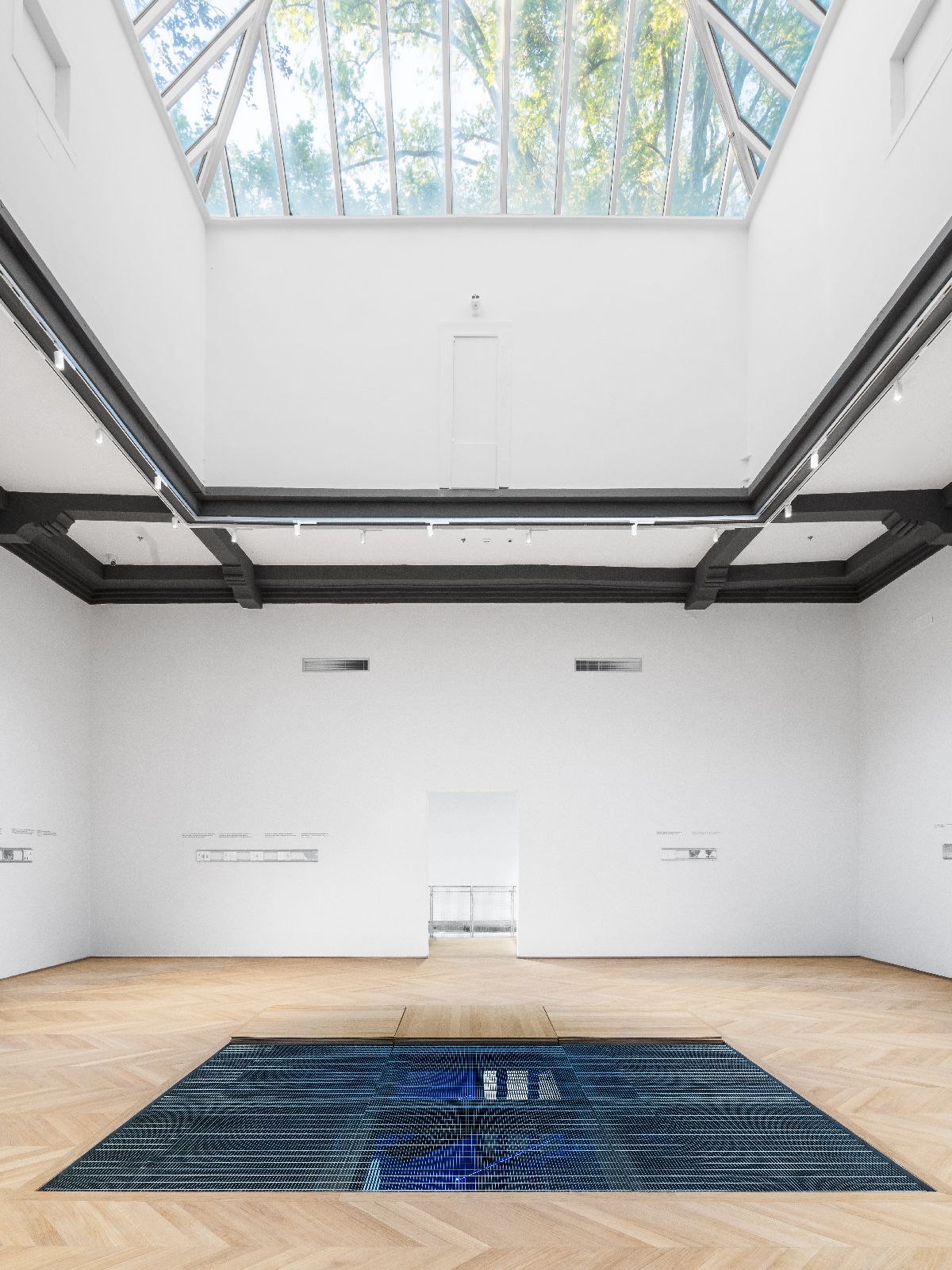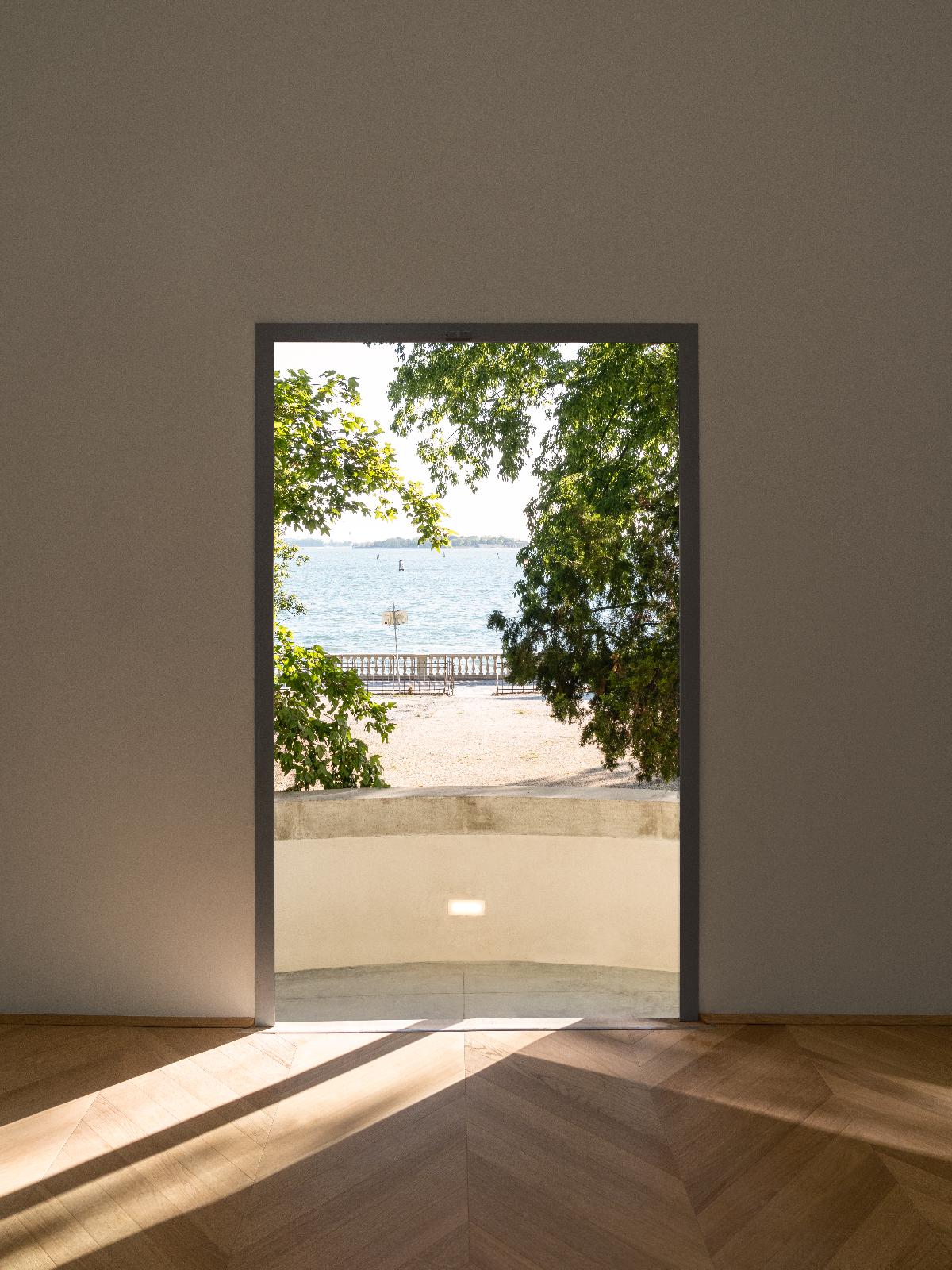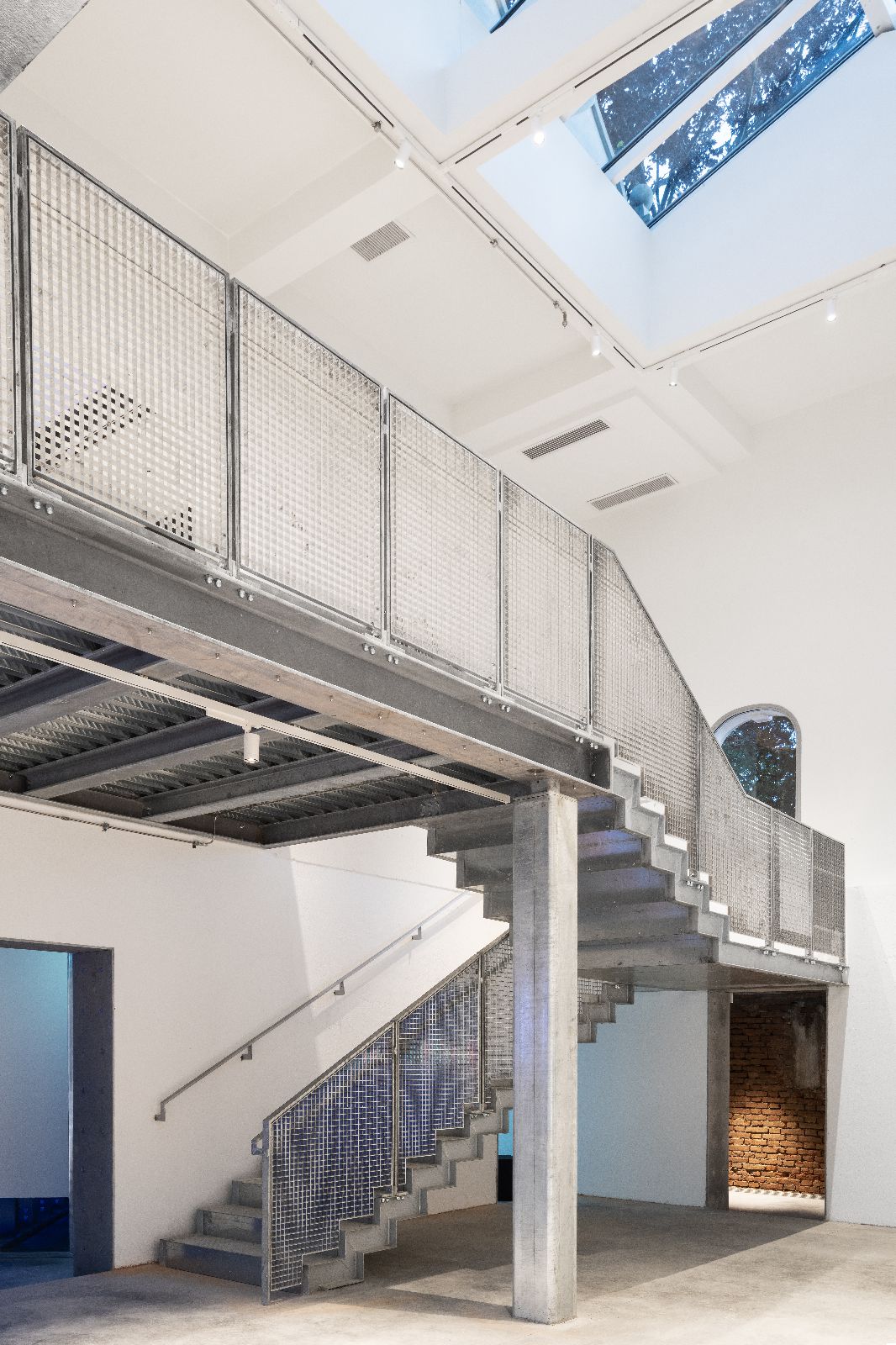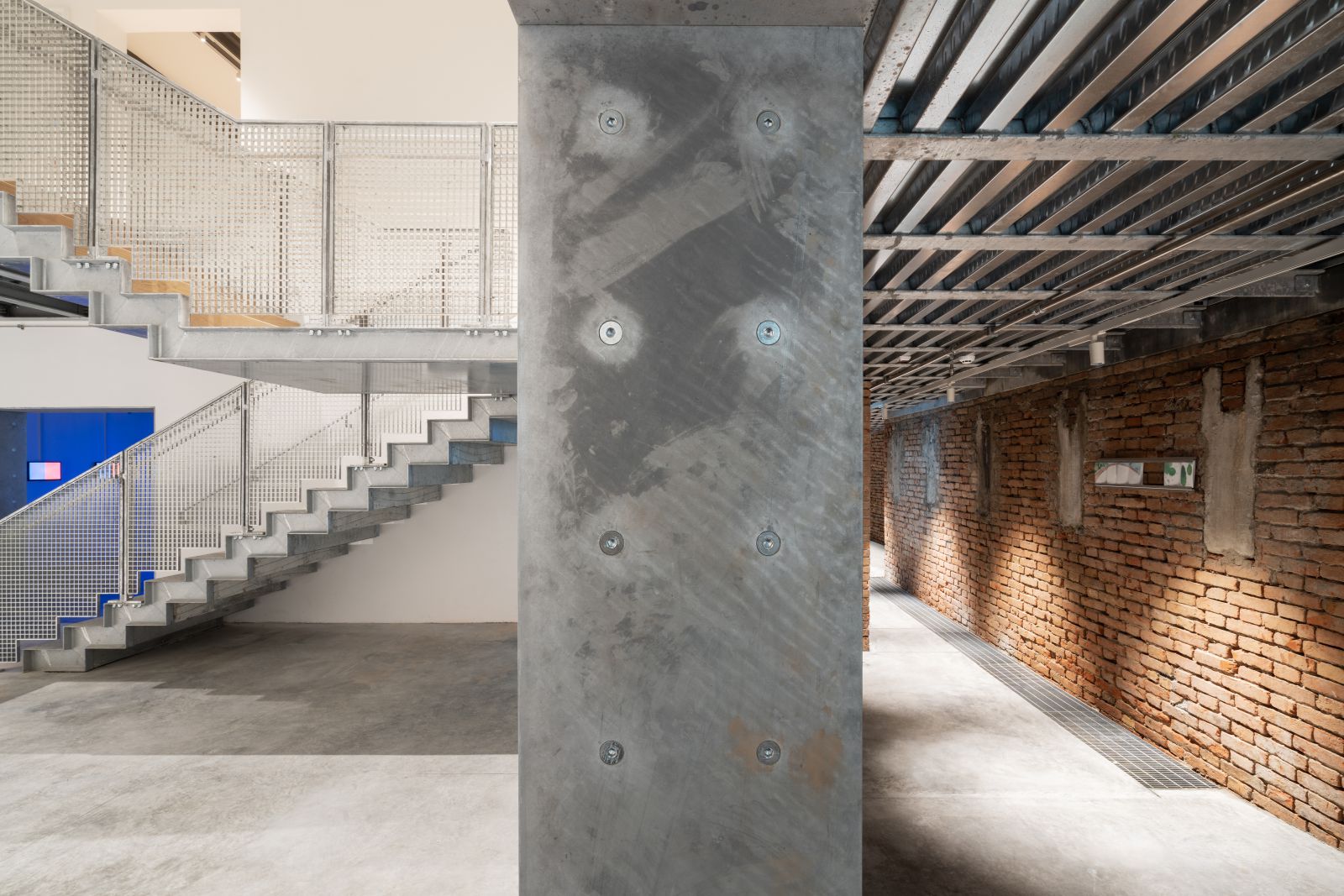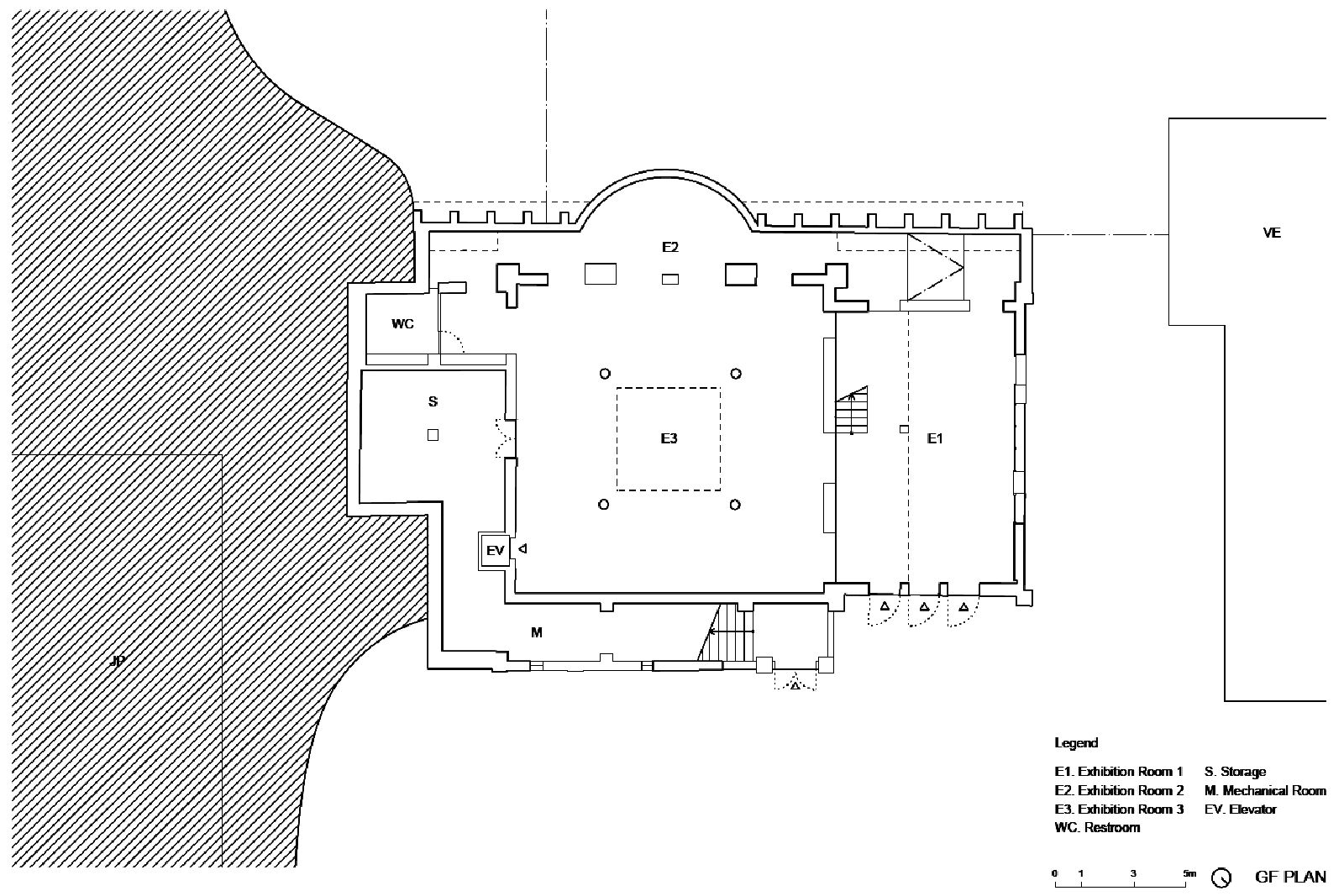The Russian Federation Pavilion at the Venice Giardini, designed by the architect Alexey Schusev, opened its doors to the public in 1914 and has been a home to Russian culture at the Venice Bienniales for more than a century. The transformation project began this year by devising a new spatial contract that navigates the tension between the physical renovation of the pavilion and the creation of its online counterpart.
Today the venue for the renewed institution of the Russian Federation Pavilion draws on ‘care’ and ‘inclusivity’ as a model in order to establish more empathetic and meaningful connections between
built and digital environments, people and ecosystems. The original architecture of the Pavilion was defined by the deliberate porosity between its exhibition spaces and their surroundings – with a terrace overlooking the Lagoon, a lavish staircase along one of the main avenues of the Giardini and the large skylights that constitute defining features of the building.
Another original element of the Pavillion was its green façade, originally intended to blend in with the trees and greenery of its setting, and then changed to ochre after World War II. Over time, several modifications to the envelope of the building have led to most of its windows and doors being closed off entirely, resulting in an introverted box. Meanwhile, on the inside, the floors of the central and northern rooms were raised to expand the exhibition spaces on the ground floor.
The renovation project revives the original spirit of Schusev’s architecture, forging a character that speaks once again of openness and transparency, interpreting the historical traces ingrained in the building. The upper floor has now been restored to its original appearance, with its white walls and durmast flooring, while the ground floor is conceived as a rough, experimental space. Windows have been reopened, doors transformed into glazed surfaces, and the façade restored to its former colour.
Accessibility and circulation are improved by the addition of an elevator and new stairs in the northern room, designed to underline the original height of the floor and recover the view of the terrace and of the Lagoon beyond it. The re-opening of several doors, originally built at the end of the 1960s on a level with the Giardini, introduces the possibility of reversing the circulation path of the building, opening up exhibition spaces directly on the ground level.
The northern room is now suitable for large-scale installations, with the option of turning it into a double-height space: a temporary floor is installed on a series of beams that roll along the balcony of the new staircase, devising a space that may be adapted to various curatorial needs. The removal of a spiral staircase introduced in the central room in 2016 leaves space for another operable floor located in the centre of the space: acting as an oversize manhole, this device too allows the two levels to be connected or disconnected on the basis of varying artistic needs.
The ground floor is instead transformed into a porous space, generated by the introduction of a series of portals that connect each room, a bathroom and a new gallery under the terrace made accessible for the first time, thus further expanding the repertoire of exhibition spaces and available curatorial formats. With its history as a home for Russian culture for over 100 years, the architecture of the renewed Russian Federation Pavilion today becomes a theatrical device for contemporary arts.
It establishes new spatial connections as well as alternative possibilities for producing and exhibiting. This enables visitors to redefine the meaning of cultural institutions, engaging with various models of care towards architecture, people and whole ecosystems. Source Russian Federation Pavilion and photos Courtesy of Send / Receive.




